What Lightsaber Colors Can Teach Us About The 'Star Wars' Universe
Whether you were six or 26-years-old, you probably remember the feeling when you first picked up a lightsaber.My family recently acquired the Jedi Challenges AR set, and I cannot stop gawking at the lightsaber that came with the package – a near-perfect replica of the historic lightsaber Rey uses in The Last Jedi, the lightsaber that belonged to Luke and to his father before him. Every time the lightsaber catches my eye, I feel compelled to reverently lift it from its case, as I then proceed to swoosh the lightsaber around my living room like a bona fide, Clone Wars-era Jedi. (In fact, since sitting down to write this piece, I've already grabbed the lightsaber and re-enacted Rey's Ahch-To training session and the sequence in Snoke's throne room and Obi-Wan and Qui-Gon's duel with Darth Maul, several times each, while experimenting with my Soresu form.)In a way, I carry a lightsaber with me wherever I go. After stumbling upon a shimmering display of high-end lightsabers at a WonderCon booth two years ago, I snapped a picture and set it as my phone background and haven't changed it since. More recently, I set my lockscreen as the Dave Filoni sketch of Ahsoka Tano handing Kanan Jarrus a lightsaber during a cut scene from Star Wars Rebels, and it warms my heart whenever I see it.
— Dave Filoni (@dave_filoni) July 22, 2017
You see, these two images perfectly represent the dual appeal of lightsabers: one, that they look really damn cool, and two, that they are a symbol of the entire Star Wars saga at large. I know I'm not alone in my fascination with lightsabers – so, my eager Padawans, let's dive in and explore what's so special about these glorified, futuristic swords after all.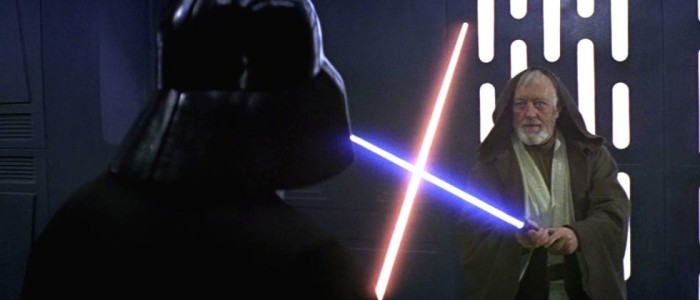
The origins of the “laser sword”
When we are first introduced to the lightsaber in A New Hope, Ben Kenobi calls it "an elegant weapon for a more civilized age." To be perfectly honest, this line always rubbed me the wrong way; can any instrument of death and destruction be considered "elegant"? Plus, Kenobi sounds like an old fogie waxing nostalgic over the good ol' days before millennials came around and ruined everything, including weaponry.To develop the concept of the lightsaber, George Lucas harkened back to the fantasy adventure movies of the '40s, where romance and chivalry reigned supreme. Lucas also fixated on the "spiritual" nature of samurai sword fights, encounters that eschewed brute force and instead embraced skill and honor. And so, the lightsaber was born: a throwback to a more Romantic era, sporting a tweaked design in order to give whole space saga thing a retro-futuristic touch.While the original trilogy fights were modeled on fencing movements, the prequel trilogy required an entirely new form of swordplay to represent the strength and awe of the Jedi Order in its prime. For The Phantom Menace, stunt coordinator Nick Gillard answered the call, choreographing the jaw-dropping "Duel of the Fates" between Obi-Wan Kenobi, Qui-Gon Jinn, and Darth Maul by synthesizing movement styles from kendo, rapier, samurai, and even tennis and tree-chopping.In the real world, the art and science of lightsabers is somewhat mundane. Original Star Wars sound designer Ben Burtt came up with the iconic lightsaber sound by combining the hum of an idling projector with the electrical interference of some loose wires. (Hey! No loose wire jokes.) At some point, the revving of a vacuum cleaner was incorporated as well. Current sound designers Matthew Wood and Ren Klyce recently revealed that the sound of a lightsaber powering up in The Last Jedi was achieved by pulling the red tab on an airplane life vest and recording the "whooshhh" sound as the vest filled up with air. In a Lucasfilm featurette on the birth of the lightsaber, George Lucas explained that the original lightsaber hilt used on set for A New Hope was merely a flash attachment for a 4x5 camera.Meanwhile, scientifically speaking, a plasma sword hot enough to melt through solid metal would also be hot enough to melt your face off before you could even activate it. And if a lightsaber blade were actually made of light, it wouldn't be very effective as a weapon, since it wouldn't have any mass. However, science could potentially explain the different colors emitted from different lightsabers, as spelled out by Nerdist's Kyle Hill in his "Because Science" video on lightsabers.But within the Star Wars universe, lightsaber colors can tell us a lot about the lightsaber wielders themselves – and about their place in the galaxy far, far away.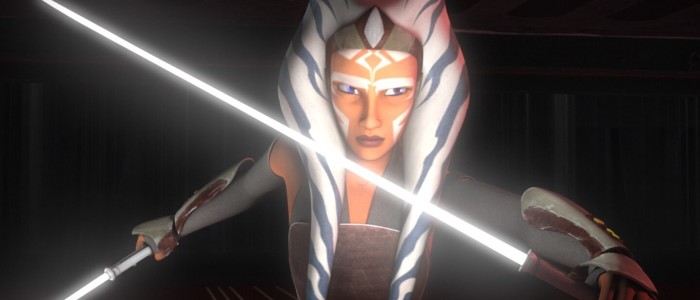
White
The Clone Wars provides an illuminating introduction to the intricacies of lightsaber construction. Beginning with the fifth-season episode "The Gathering," Ahsoka leads a group of Jedi younglings to the planet Ilum to pick the kyber crystals that will power their very own lightsabers. It's all delightfully Harry Potter-esque, with the whole "wand chooses the wizard" vibe – each youngling must overcome their inner demons to find the crystal that calls out to each of them. Droid professor Huyang (voiced by David Tennant) is on hand to aid the younglings in assembling their lightsabers, as he has for a thousand generations before. While Huyang provides mechanical instruction, the younglings must also reach out to the Force to complete their task.New canon novels Catalyst and Ahsoka are riddled with enticing details on these mysterious crystals. Several planets across the galaxy are known to contain kyber, including Ilum, Christophsis, and Jedha – though during the age of the Old Republic, access to these worlds were restricted to the Jedi Order only. Kyber crystals are uniquely attuned to the Force itself, described as "living crystals" and believed to be almost sentient, if not psychic. In this sense, kyber crystals represent the fulcrum of science and spirituality: they contain a tremendous source of natural energy, underscoring their technological use. But their connection to some sort of cosmic higher power marks them objects deserving of awe, as sacred symbols of the church of the Force.As warrior-monk Chirrut Imwe says in Rogue One: "The strongest stars have hearts of kyber." Indeed, the precious nature of kyber crystals unsurprisingly makes them a prime target for nefarious schemers. We see this in the Clone Wars episode after "The Gathering," when the Jedi younglings are targeted by pirate Hondo Ohnaka and his gang, who attempt to steal the newly harvested kyber crystals in order to make a hefty profit on the black market. And of course, we see this in the very existence of the Death Star: as planned in Catalyst and carried out in Rogue One, Orson Krennic oversees the mining of mass quantities of kyber crystals in order to power his world-destroying superweapon. The corruption of kyber crystals gets even more ominous in one particularly chilling scene in Catalyst, when Krennic presents Galen and Lyra Erso with a sample of a kyber crystal that could only have come from a Jedi's lightsaber.The Ahsoka novel sheds more light on the nature of kyber crystals – and it also provides a backstory for Ahsoka's distinctive, white lightsabers on Star Wars Rebels. With Order 66 reverberating across the galaxy, Ahsoka left her green sabers – indicative of her former status as a Jedi padawan – at the site of a fake grave for clone trooper Captain Rex, and set out on her own to live in relative obscurity and wallow in angst-ridden memories of her time as a Jedi. Disillusioned with the Jedi Order after being unjustly accused of murder and treason, Ahsoka still finds herself committed to, as Bail Organa calls it, "acts of kindness." At the end of the novel, she resolves to construct new lightsabers and heads to Ilum to begin the process. But the Force calls her elsewhere, and a battle with a Sith-affiliated Inquisitor leaves her in possession of two kyber crystals that she uses to construct her new lightsabers – her white lightsabers.When Ahsoka first appeared on Rebels with her white lightsabers, showrunner Dave Filoni explained that they represent her neutrality, her non-affiliation with either Jedi or Sith. And when Luke Skywalker boldly announced that it was "time for the Jedi to end," many fans immediately looked to Ahsoka as the first new canon "grey Jedi," demonstrating that there is a moral space to inhabit in between Jedi and Sith.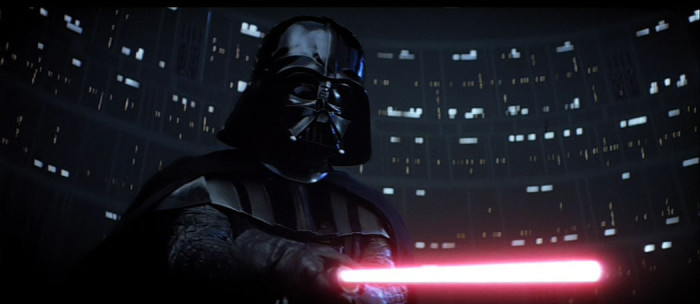
Red
The kyber crystals themselves, however, are inherently attuned to the light side. As spelled out in Ahsoka, Sith acolytes forge their lightsabers by bending the kyber crystals to their will – by "bleeding" them, hence the blood-red coloration of Sith lightsaber blades. (Though we know it's possible to "purify" a Sith-infected kyber crystal, as Ahsoka did with the Inquisitor's crystals to forge her own.) Thematically, the red hue certainly resonates: red represents passion, violence, fire, and fury – all elements that make up the dark side.In my expert opinion, Darksiders have much cooler saber designs: from the dual-bladed saber that Darth Maul wields in The Phantom Menace, to the helicopter-like blades carried by the Inquisitors in Star Wars Rebels, to the uniquely curved hilts Asajj Ventress fights with in The Clone Wars. Each of these designs indicates a sort of perversion of the reserved and straight-laced Jedi ideal, expressing the darksiders' unrestrained ferocity and savagery.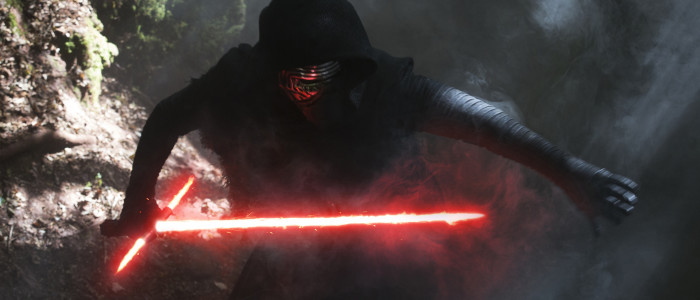 Kylo Ren's saber epitomizes this theme in an even more literal way. We see in the flashbacks in The Last Jedi that Ben Solo possessed a regular, blue-bladed lightsaber when he was a student of Luke's. Sometime after turning against his former master, Ben – now Kylo – constructed the signature crossguard lightsaber that we first see in The Force Awakens. As the visual dictionary from The Force Awakens explains, the side vents are not just aesthetically Extra™, but also functionally necessary: the cracked kyber crystal emits so much "raw, untamed power" (as Snoke describes Kylo) that a single, lateral blade would not be able to contain it, hence the two lateral vents. The visual effects in the films support this concept as well, depicting Kylo's blade as a crackling flame of unsteady rage, as opposed to the immovable blue beam that Rey wields against him.Kylo's lightsaber is the perfect symbol of his entire character struggle: Like his lightsaber, Kylo Ren's persona is fueled by torment, since he is constantly, as he tells his father Han Solo, "being torn apart." Every activation of his red-hued saber is a supreme act of will, an anguished dive into a Dark Side that he still hasn't full embraced. It seems clear that the kyber crystal in his current saber is the same one that was contained in his original blue lightsaber – but Kylo was so tortured by his own turn to the Dark Side that the crystal bled and cracked, resulting in an even more unstable weapon, and symbolizing an even more unstable soul.
Kylo Ren's saber epitomizes this theme in an even more literal way. We see in the flashbacks in The Last Jedi that Ben Solo possessed a regular, blue-bladed lightsaber when he was a student of Luke's. Sometime after turning against his former master, Ben – now Kylo – constructed the signature crossguard lightsaber that we first see in The Force Awakens. As the visual dictionary from The Force Awakens explains, the side vents are not just aesthetically Extra™, but also functionally necessary: the cracked kyber crystal emits so much "raw, untamed power" (as Snoke describes Kylo) that a single, lateral blade would not be able to contain it, hence the two lateral vents. The visual effects in the films support this concept as well, depicting Kylo's blade as a crackling flame of unsteady rage, as opposed to the immovable blue beam that Rey wields against him.Kylo's lightsaber is the perfect symbol of his entire character struggle: Like his lightsaber, Kylo Ren's persona is fueled by torment, since he is constantly, as he tells his father Han Solo, "being torn apart." Every activation of his red-hued saber is a supreme act of will, an anguished dive into a Dark Side that he still hasn't full embraced. It seems clear that the kyber crystal in his current saber is the same one that was contained in his original blue lightsaber – but Kylo was so tortured by his own turn to the Dark Side that the crystal bled and cracked, resulting in an even more unstable weapon, and symbolizing an even more unstable soul.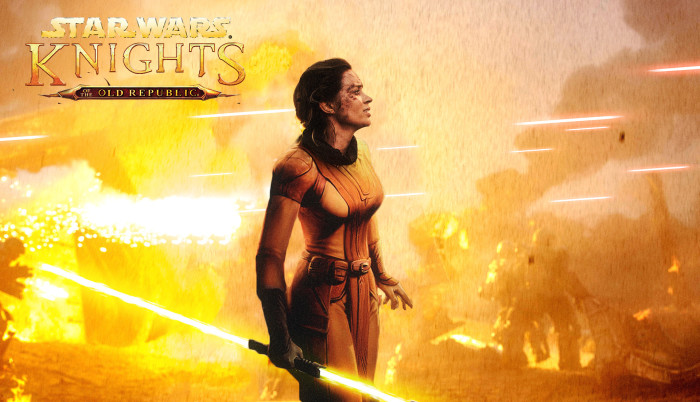
Yellow
There is hope for a more measured approach to embracing the ways of the Force. In the Knights of the Old Republic game, Jedi Knights identified with one of three schools of thought: the Guardians, the Consulars, and the Sentinels. Guardians engaged in combat training and generally held blue lightsabers, while Consulars focused on diplomacy and carried – but rarely used – green-bladed lightsabers. Jedi Sentinels embraced a combination of the two other schools, mastering forms of combat and diplomacy while also delving into non-Force related skills. These middle-ground Jedi carried rarely seen yellow lightsabers, representing, if you will, Aristotle's "golden mean."Though KOTOR is no longer canon, yellow blades have shown up on The Clone Wars, wielded by the Jedi Temple guards that escort Ahsoka Tano and Barriss Offee over the course of their respective trials in the "Wrong Jedi" arc. Even so, the philosophy upheld by the Jedi Sentinels parallel the notion of the grey Jedi (for example, Ahsoka) and will undoubtedly play a role in establishing a new Jedi Order of sorts in the follow-up to The Last Jedi.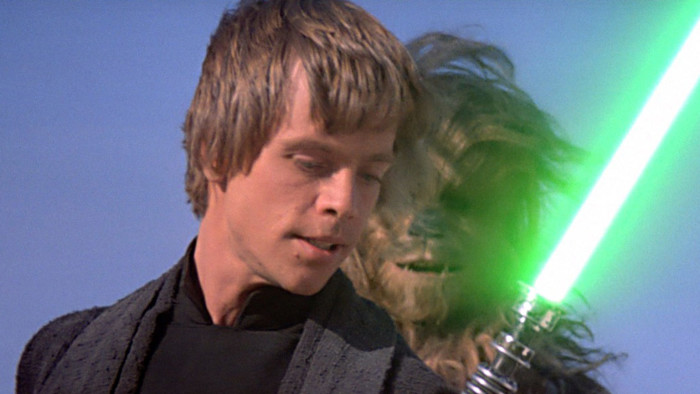
Green and Blue
Ask anyone off the street what color a Jedi's lightsaber is, and they will most likely respond with either green or blue. Back when the Star Wars universe was in its nascent stages, the lightsaber dichotomy was simply a choice between red (for Sith) and blue (for Jedi). Two films later, green was added into the mix; anecdotally, Luke's new lightsaber in Return of the Jedi was actually just changed from blue to green in post-production in order to offset the blue of the sky. Aside from that, it seems that the kyber crystal stores that the Jedi had access to only produced blue or green saber blades because, well, George Lucas said so.Non-canonical distinctions aside, the blue and green blades are a shining symbol of the Jedi Order at its zenith. The prequel trilogy depicts a more militant Jedi Order, but the ideal purpose of a Jedi has always been to protect. As Yoda teaches Luke on Dagobah, "A Jedi uses the Force for knowledge and defense, never for attack," a lesson that – perhaps paradoxically – can be applied to a Jedi's weapon of choice as well. As George Lucas describes it, the lightsaber was primarily designed as a defensive tool, first and foremost used for blocking attacking weapons like blasters.In Lucas' words, the lightsaber in the original Star Wars was "more of a symbol than it was an actual weapon," and indeed, the symbolism of the lightsaber is even stronger than its effectiveness as an in-universe weapon. The lightsaber is present – or purposely tossed aside – in most (if not all) of the most memorable and emotional sequences in the Star Wars saga. There's Qui-Gon's death and Darth Vader's redemption, of course, but also the "Battle of the Heroes" between Anakin and Obi-Wan in Revenge of the Sith, with their mirrored blue blades clashing against the backdrop of the raging lava of Mustafar; there's Ahsoka versus Anakin on Rebels, with Ahsoka's newly minted white sabers coming up against her former master's corrupted red one; and there's Sabine Wren's fraught training session with the Mandalorian Darksaber, a symbol of her people's warrior nature as well as her own complicated history. The action sequences themselves are epic, to be sure, but it is the emotional history between two meeting blades that lends each scene its pathos within the Star Wars saga.There is one blade in particular whose history connects several key characters in the Star Wars universe and could indicate the direction in which the saga is heading. As a padawan, Anakin Skywalker started out with Qui-Gon Jinn's green lightsaber before building one of his own. When that lightsaber is destroyed in the droid factory on Geonosis in Attack of the Clones, Anakin builds a new, blue-bladed lightsaber that he would carry throughout The Clone Wars and Revenge of the Sith. After Anakin's defeat on Mustafar, Obi-Wan picks up his former Padawan's lightsaber and keeps it in his hut on Tatooine until he presents it to Luke in A New Hope. The lightsaber is seemingly irretrievably lost when Luke drops it – along with his hand – down an air shaft on Cloud City in The Empire Strikes Back. And yet somehow, during the 30 years between the original trilogy and the sequel trilogy, the lightsaber ends up in the possession of Maz Kanata (How? "A good question for another time," and that "time" better be Episode IX, J.J.!), whereupon she hands it over to Rey.Just like Kylo and his lightsaber, Rey's relationship to Luke's lightsaber represents her own internal struggle. She resists the hero's call when Maz first tries to hand her the lightsaber on Takodana, but she triumphantly embraces her destiny later on when she summons the lightsaber before her duel with Kylo Ren on Starkiller Base. In The Last Jedi, she backpedals a bit by trying to pawn the lightsaber off to its previous owner, Luke, and then briefly shares possession of the saber with Kylo during their fight with Snoke and the Praetorian Guard. But in her subsequent struggle with Kylo, Rey realizes that Kylo is still too extreme, too enslaved to his Dark Side passions. When we see Rey at the end of The Last Jedi, cradling the two halves of the saga's most historic lightsaber – literally torn apart by the conflict between the light side and the dark – it's a tantalizing tease for what's to come. Since Rey has come to learn that it's important to let go of some of the past, I imagine her new lightsaber (or lightsabers!) will involve a color change as well. Personally, I'm rooting for white, like Ahsoka's, or yellow, as a nod to the Old Republic. Either one would constitute a fulfillment of Luke's pronouncement in The Last Jedi – that it's time for the Jedi, as represented by the blue and green blades, to end.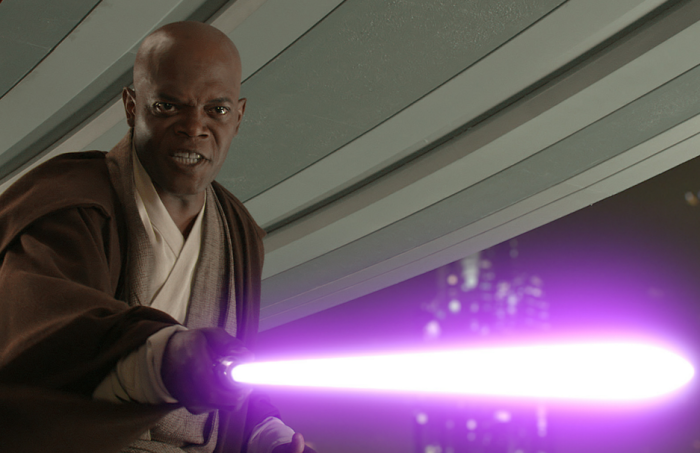
Purple
Listen, there really is no such thing as a purple lightsaber, but Samuel L. Jackson gets what Samuel L. Jackson wants, mofos. Mace Windu FTW!
